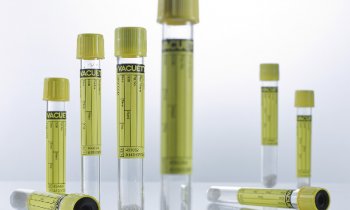Is copper preventing nosocomial infections?
The properties of copper in helping prevent nosocomial infections were debated this October at the Infection Prevention 2013 conference, when Professor Tom Elliott, Consultant Microbiologist at University Hospitals Birmingham NHS Foundation Trust, addressed the question: ‘Can the use of copper help prevent infection?’


From his own pioneering clinical trial and a recently-reported multi-centre trial in the USA, the conclusion is that copper and copper alloy touch surfaces (collectively termed ‘antimicrobial copper’) may indeed have a role in providing patients with a safer, more hygienic environment.
The antimicrobial activity of copper has long been recognised – in people in Ancient Egypt, Greece and Rome used copper in various medical treatments to help prevent infections. However, its ability to rapidly kill bacteria, viruses and fungi that settle on its surface has now been comprehensively demonstrated in the laboratory, and is also evident in clinical settings.
In the first clinical trial – carried out at the now-closed Selly Oak Hospital in Birmingham between 2007 and 2008 – it was shown that microbial load on frequently-touched surfaces, such as taps, light switches, grab rails, bedside tables and toilet seats, could be reduced by greater than 90% if these items are replaced with antimicrobial copper equivalents. These observations have been subsequently supported by similar studies in healthcare facilities across the world.
Most recently, a preliminary report on the effect of antimicrobial copper touch surfaces on the incidence of nosocomial infections (HCAIs) in an ICU environment showed a patient’s risk of acquiring an HCAI is reduced when only six key touch surfaces in their vicinity are made from antimicrobial copper.
‘This supports the use of antimicrobial copper touch surfaces as an adjunct to existing infection control procedures, in conjunction with continued regular surface cleaning and disinfection.
‘These trial results raise a simple question,’ Professor Elliott says. ‘Why select a material other than antimicrobial copper when specifying surfaces that may be vehicles for the spread of infection? With the advent of multiple antibiotic-resistant bacteria causing HCAIs, some of which are very difficult to treat, such an approach – with the continuous antimicrobial activity of copper – is potentially even more relevant and important in today’s healthcare setting than ever before.’
18.11.2013











